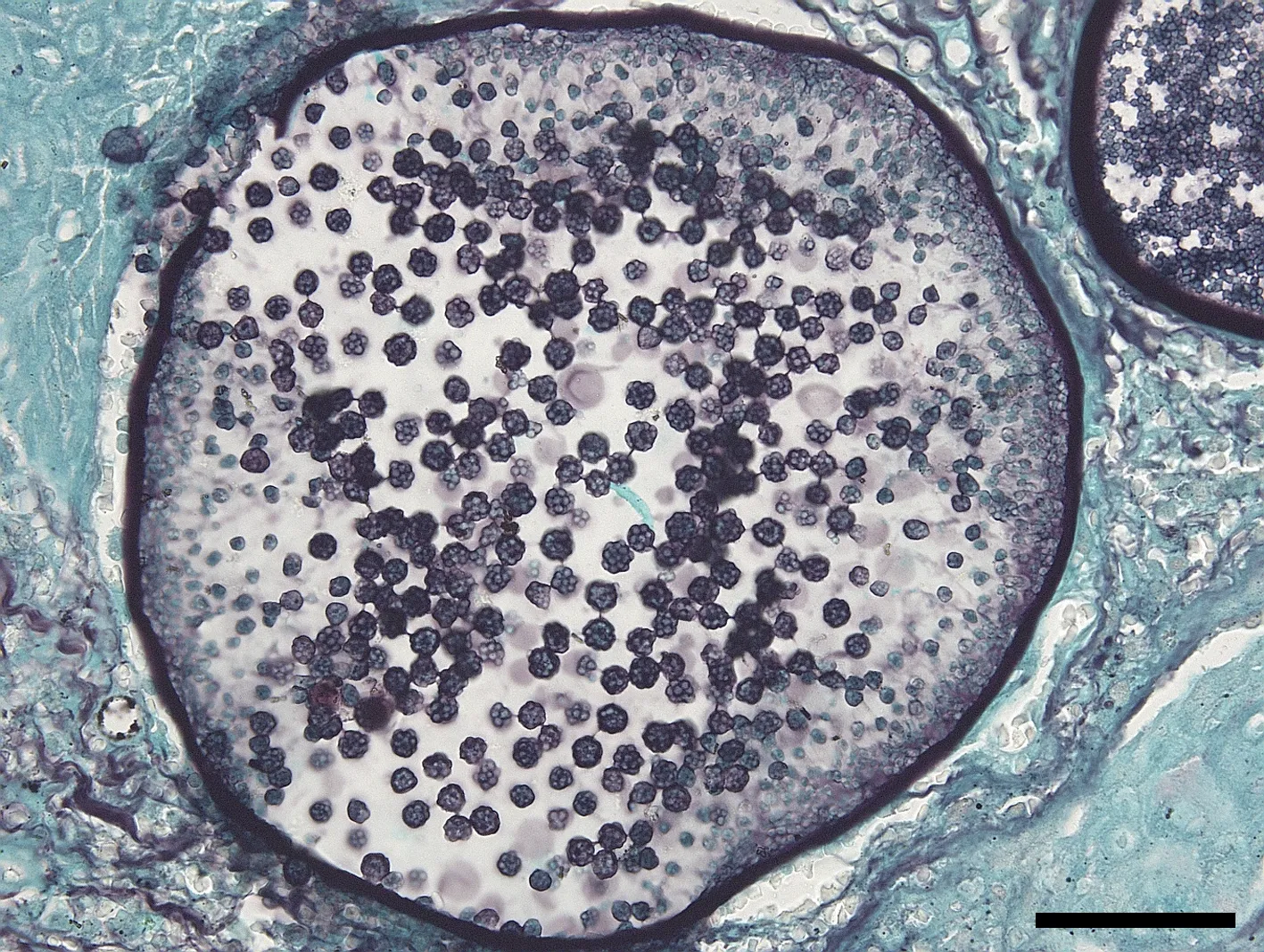Rhinosporidium seeberi infection in a male mule in the State of Tocantins (Brazil)
DOI:
https://doi.org/10.24070/bjvp.1983-0246.018003Keywords:
rhinosporidiosis, Mesomycetozoan, nasal polyps, rhinitis, granulomatousAbstract
Rhinosporidiosis is a chronic disease caused by Rhinosporidium seeberi, which can infect several host species, including domestic animals and humans. The taxonomy of R. seeberi is still controversial, but scientific evidence supports the classification of this organism as a Mesomycetozoan. Considering the absence of previously reported cases of rhinosporidiosis in the Northern Region of Brazil, the goal of this report was to describe the clinical and pathological findings of a case of R. seeberi infection in a male mule in Araguaína (Tocantins State, Brazil). An 8-year-old male mule presented respiratory difficulties due to a polypoid exophytic lesion that partially obstructed the nasal cavity. The lesion was surgically excised and submitted for microscopic analysis. Microscopically, there was multifocal erosion, epithelial hyperplasia, diffuse inflammatory infiltrate, composed of many histiocytes and plasma cells, and fewer neutrophils and lymphocytes, with numerous intralesional organisms with diameters ranging from 10 to 400 μm compatible with sporangia exhibiting numerous nuclei and endoconidia compatible with R. seeberi.


